
Editor's Note: This story originally appeared on Living on the Cheap.
Those elaborate charcuterie boards on social media might have you convinced that you need to spend hundreds of dollars on cheese and crackers to have even a barely presentable spread.
But as the author of three books on cheese and one on sausage, I’m here to tell you that that is false advertising.
With a little bit of planning and some shopping savvy, you can create a swoon-worthy charcuterie board that is as elevated as it is frugal.
Don’t buy too much
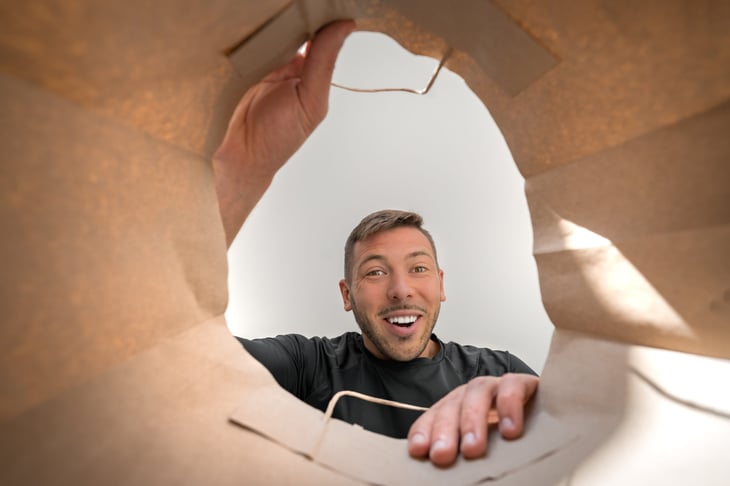
If you’re planning to serve a cheese and charcuterie board, it’s easy to get carried away.
While there are plenty of social media posts that show entire kitchen islands covered with elaborate charcuterie presentations, a lot of the cheese on those boards ends up getting tossed at the end of the party.
Unless this oversized board is going to be ALL that you’re serving, or if you’re feeding a crowd of 200, your friends and your family will likely not eat all of that delicious dairy goodness.
A good rule of thumb is to plan for 1 to 2 ounces of cheese per person for a cheese plate, but if you’re doing a cheese or cheese-and-charcuterie tasting, then you’re going to need 4 to 6 ounces per person.
Even if you live in Wisconsin, which I do, you don’t need more than that.
Shop smart
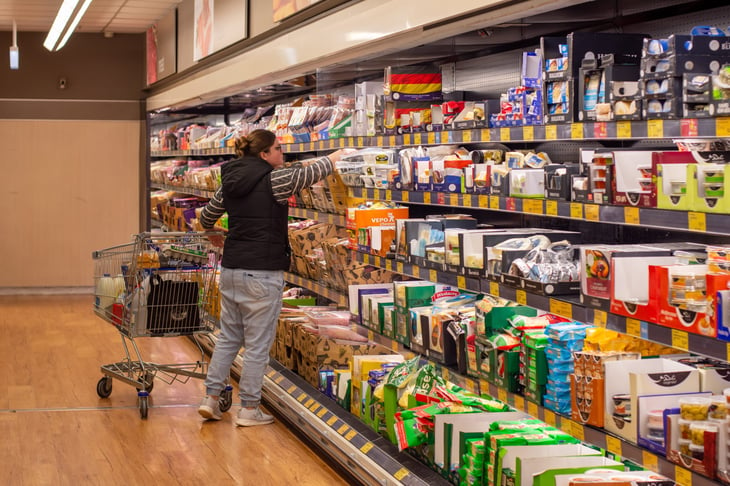
Great cheese deals – and amazing cheeses – can be found at places like Aldi, Trader Joe’s and Costco.
I have found aged Swiss, imported Manchego, and Irish cheddar for less than $6 a wedge at all of these places. I’ve also found some American artisan cheeses like Carr Valley there, too.
If you’re looking for a very specific type of cheese, they might not have it, as all three of these places have an ever-changing selection, but if your heart’s not set on one very specific type of cheese, you can build your entire charcuterie board from one of these stores.
Charcuterie — the proscuitto, serrano ham, and salami — is also sold at all three of these stores, but the cheapest sausage I’ve found is at Aldi.
Aldi usually sells individual packages of one type of sausage, but the store also sells charcuterie selections of three sausages for under $6.
Shop around
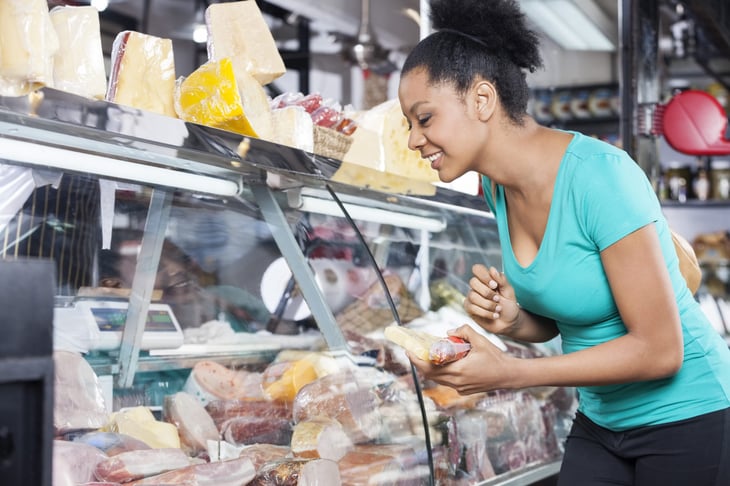
I’ve also found terrific deals at fancy cheese shops and Whole Foods.
Fancy cheese shops and Whole Foods usually have an odds-and-ends selection – like 2 ounces of some expensive Roquefort or 5 ounces of a 10-year-old cheddar. They’re cheesy leftovers, and they’re absolutely perfect to add to a charcuterie board.
Ethnic grocery stores also sometimes have great cheese counters, and it’s worth visiting the selection of these stores in your area to see which ones stock up on excellent cheddar, for example.
If you live near any cheesemakers — and there are small cheesemakers in almost every state — you can usually buy their cheeses more cheaply at their factory stores.
Most of these smaller cheesemakers also sell and ship their cheeses so you can also find them online. Their online stores will not be as inexpensive as shopping in person, but they’re sometimes cheaper, even with shipping, than buying from a gourmet cheese shop.
Go vertical or horizontal in tastings
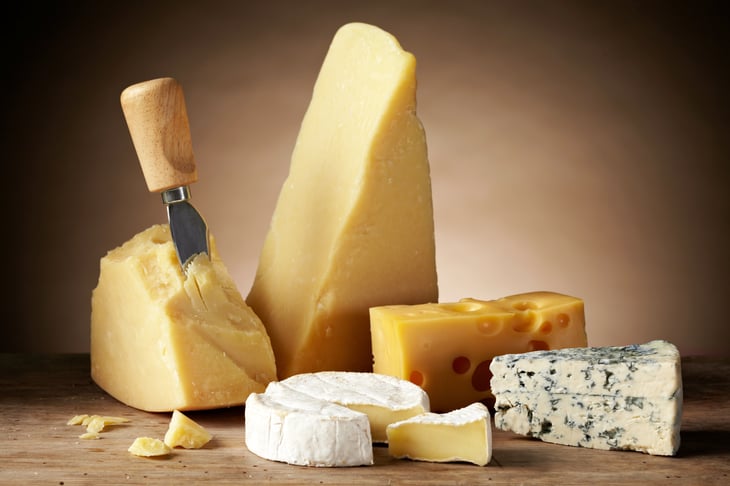
Plan your tasting or charcuterie plate before you walk in the store and go crazy. To start your plan, decide whether you’re going to do a vertical or horizontal tasting.
A vertical tasting is focusing on one type of cheese or region, like three to five types of cheddar, three types of blue cheese, or four types of Italian cheese.
A horizontal tasting is a wide variety of types, textures, and milks, or what most people recognize as a traditional charcuterie board.
For a good horizontal tasting of five cheeses, start with one fresh cheese and one aged or hard cheese, and then fill in three cheeses in between these textures and ages like a bloomy or washed rind cheese, a goat’s milk or sheep’s milk cheese, and a blue cheese.
This planning — horizontal or vertical — helps you rein in your tastebuds and not overbuy. If you have a plan, then you’re not going to end up spending $75 on cheese at Aldi, for example, because you just fell in love with everything in the cheese section.
Plan for your budget
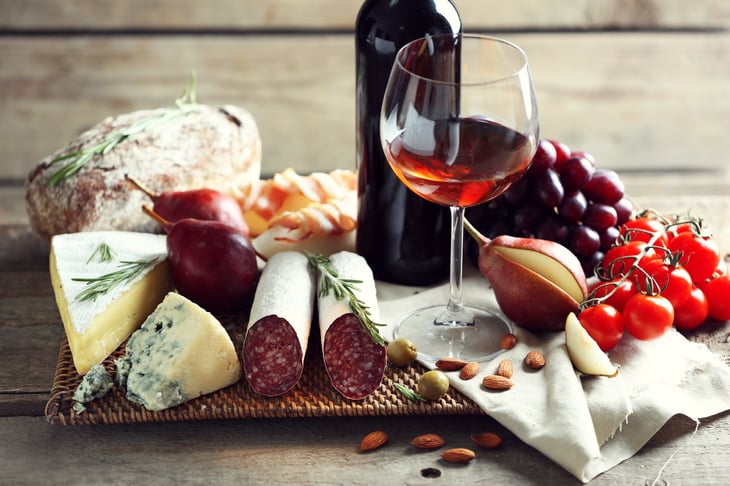
Though you can stay on a budget with either vertical or horizontal, it’s easier to rein in a tasting that’s vertical, because it’s harder to go crazy with a narrow selection.
But even with a horizontal tasting, where the sky’s the limit in terms of types of cheeses, you really don’t want to have too many varieties.
Though those gorgeous photos on social media feature upwards of dozens of products, our taste buds won’t appreciate more than six to eight kinds of cheese, and you can think similarly about sausage.
Three to five is usually the maximum number of cheeses that cheese experts recommend. After that, our palates usually get confused and overwhelmed.
If you watch people approach a cheese plate, they might try everything first, but then they go back to one or two of their favorites anyway.
It’s not just about the cheese or charcuterie
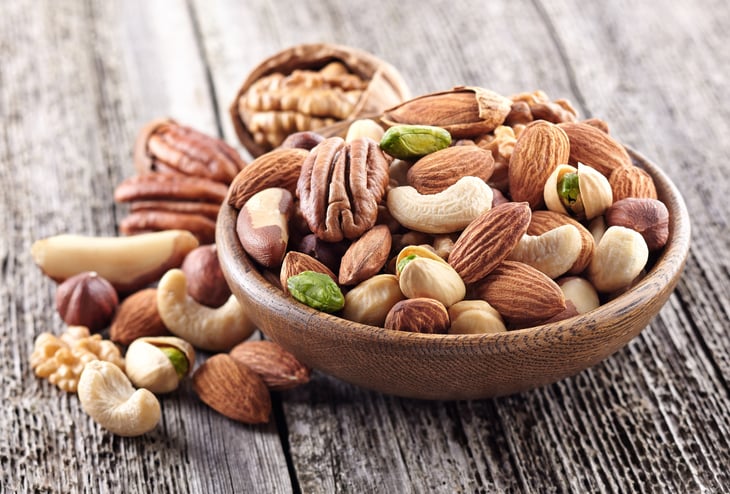
It’s also about the niblets in between the two. Think crackers and breads, honeys and jams, dried fruits and nuts, fresh fruits and olives, or chocolates and candies.
If you’re thinking budget, apples and pears pair amazingly well with both cheese and sausage, but one little pint of raspberries or blackberries can go a long way. I don’t recommend serving grapes or raisins if you’re also planning to serve wine because table grapes and regular raisins clash with most wines.
For the bread portion, pick one or two types of crackers and maybe one bread. If you’re on a budget, I recommend making your own no-knead bread, which will impress your guests and fit your budget.
I also recommend adding one gluten-free item, and you can get reasonably priced gluten-free crackers and chips at Aldi and Trader Joe’s. Even if you or one of your guests isn’t gluten-sensitive, crackers and chips made out of almonds, rice, or corn add a different texture to the charcuterie board.
And texture is important. Don’t serve five types of saltines, for example; pick two to three different styles. It adds interest, and it’s not usually that expensive.
I’ve found some amazing crackers at Aldi, Trader Joe’s, and Costco, for example, but I’ve also found cracker deals at regular grocery stores, and I’ve just stocked up when my favorite ones are on sale.
Mix things up
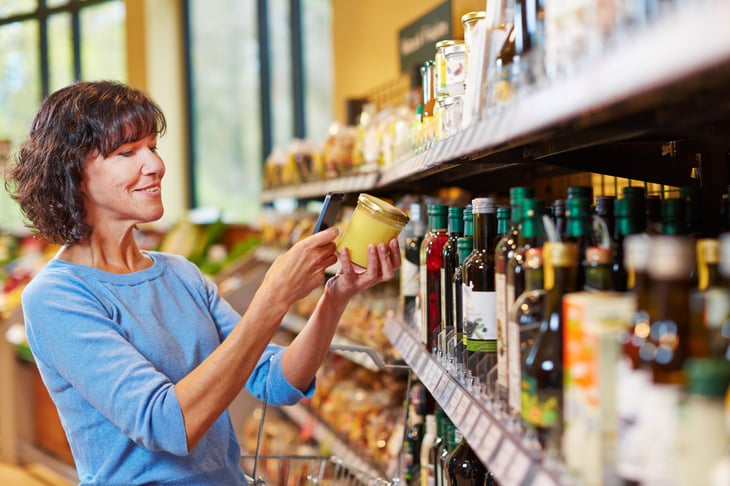
I also love adding a mixture of nuts and dried fruits. You don’t have to add a lot — just the size of a couple of packs of trail mix, and you can even just swipe them from your kiddo’s snack offerings — but it makes a big impact.
I also love, love, love adding a small container of honey or jam to the plate. Honeys, jams, and even mustards all can create a bridge between the charcuterie board and the beverages you’re serving.
I also love adding lemon zest and cracked pepper onto a fresh cheese — burrata, mozzarella, chevre — as it will pair the cheese with both light (white wines, pilsners) beverages and dark (red wines, stouts) beverages.
It’s a fun trick I learned from a California cheesemaker and chef who says she always serves her cheese that way at winery events.
Again, this trick isn’t expensive, but it adds a lot of sophistication to your charcuterie board.
Plate it right
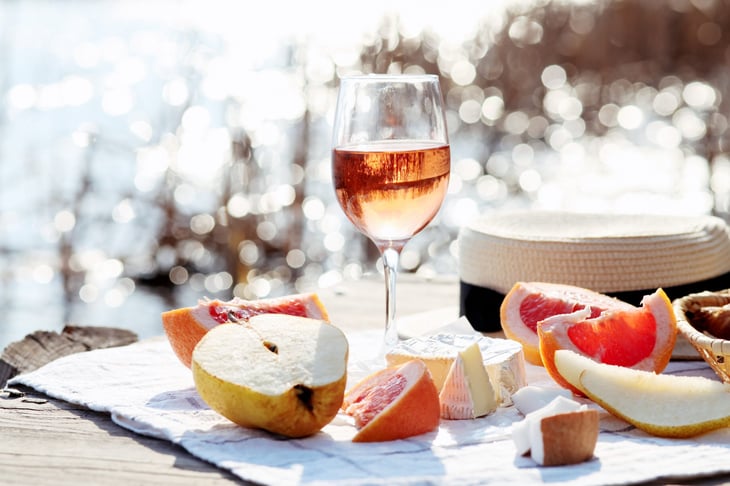
A charcuterie plate starts with, well, the plate or serving platter. While you can buy an expensive, marble slab that says “fromage” from a fancy home goods store, you don’t even need a plate!
Carefully cut parchment paper taped onto a table works. But if you want to serve it on a platter or plate, you can find some great serving vessels at resale shops and estate sales.
You can also find some beautiful items at restaurant wholesalers, which usually also sell to regular people.
And one of my favorite plating tricks is to go to Home Depot or another home remodeling store and just buying one very large floor tile. You can find some slate, marble, and ceramic tiles that would be just perfect for serving as a charcuterie plate.
If you’re planning to do individual tastings, you can use smaller tiles, but you can also use martini glasses — cut up the cheese, create a few sausage roses, and then sprinkle in some nuts and fruits.
To slice or not to slice
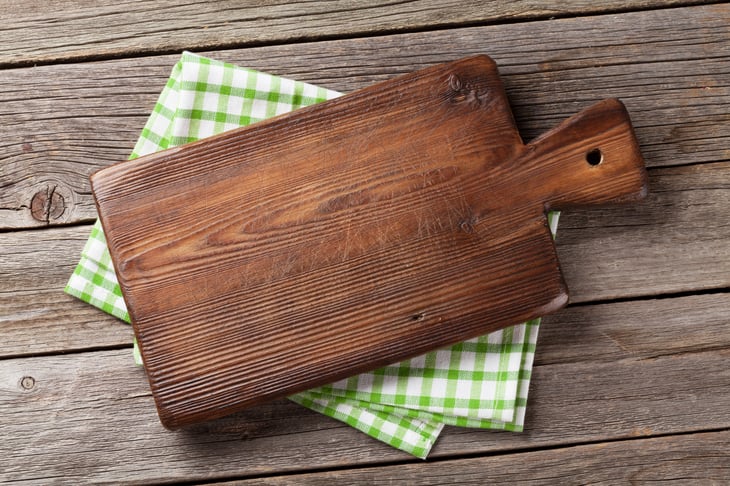
Before you set up your charcuterie board, you need to decide if you’re putting whole cheeses on the platter and letting your guests cut off portions, or if you’re going to slice the cheese.
If you slice the cheese, cut the pieces as neatly and uniformly as possible. If you’re planning on doing charcuterie roses or rollups, do that next. Then, start planning your board.
For the most visually impressive board, use odd numbers — five types of cheese, three types of crackers, etc. Start with the honey, dips, or butters — anything you have in bowls, place them on your tray first.
Then start with your bigger items — the biggest cheddar or wheel of Brie, for example — and then start filling in the spaces.
When you’re filling in the spaces, think like a toddler: Don’t let each single type of food touch each other. For example, don’t let the cheeses touch each other, but the cheese can touch the charcuterie, the fruits, and the crackers.
For the prettiest board, be neurotic about it.
Add finishing touches
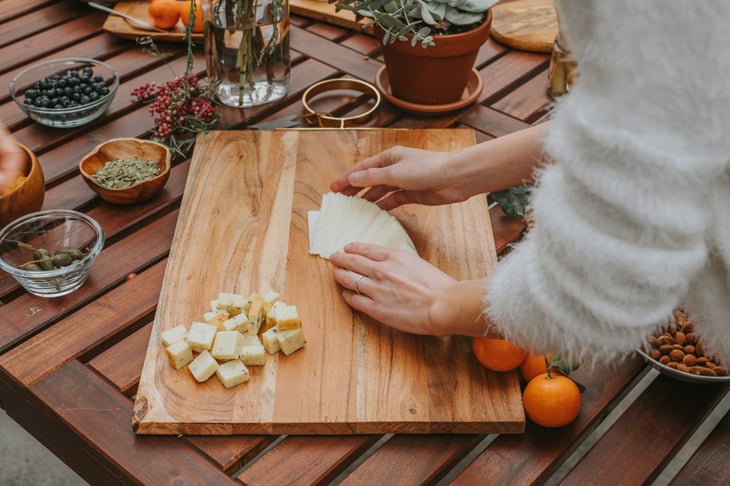
Add the charcuterie next. To make the charcuterie look pretty, roll the meats up or fold them neatly, and then stack them in overlapping layers between the cheeses.
Then add the crackers, lining up a row of crackers between two cheeses, for example, and sprinkle in the fruits and nuts.
If you want to add a finishing touch, add a few sprigs of fresh herbs or fresh flower buds from your garden.
Use leftovers to make fromage fort
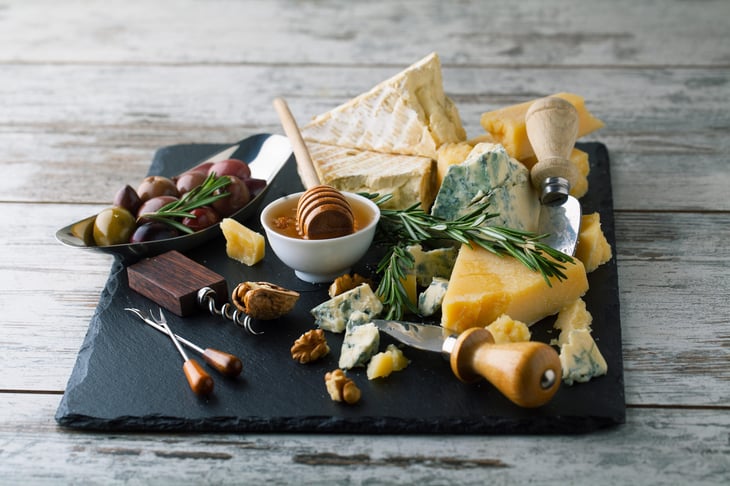
Even if you plan well, you might have leftover cheese. While you could make a delicious mac ‘n’ cheese, omelet or fondue with the odds of Brie and the bits of cheddar, you can
also make fromage fort.
Fromage fort is French for “strong cheese,” and it’s basically homemade cheese spread.
Simply toss the leftover bits with white wine, butter, garlic, salt and pepper into a blender, and blend until smooth.
Start with about 1/2 pound of cheese to 1 cup unsalted butter to 1/2 cup of wine, but add the wine slowly, and taste as you go.
Instead of butter, you can also use cream cheese, and instead of wine, you can use beer, hard cider, or nonalcoholic cider, too. You can also add fresh herbs like thyme, dill, and parsley, too.
Basically, use the cheese and butter as your canvas to paint a tasty cheese spread.





Add a Comment
Our Policy: We welcome relevant and respectful comments in order to foster healthy and informative discussions. All other comments may be removed. Comments with links are automatically held for moderation.